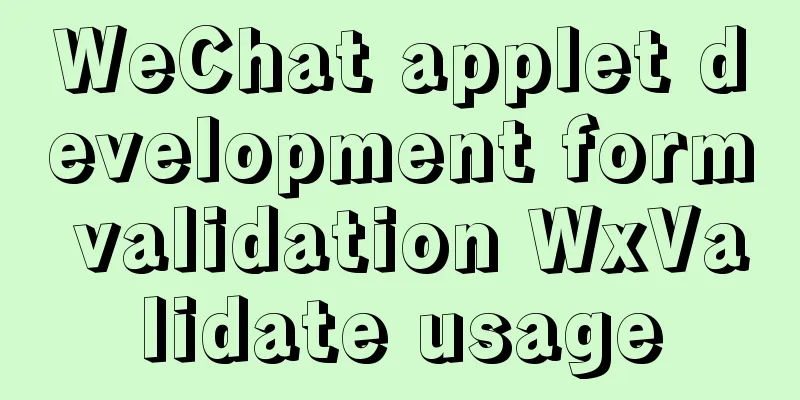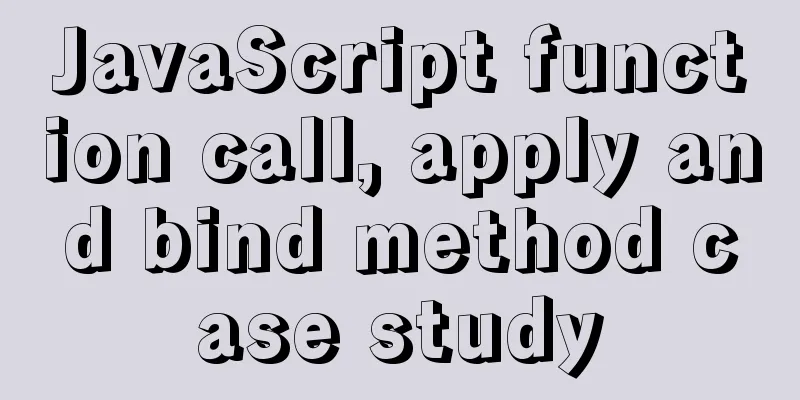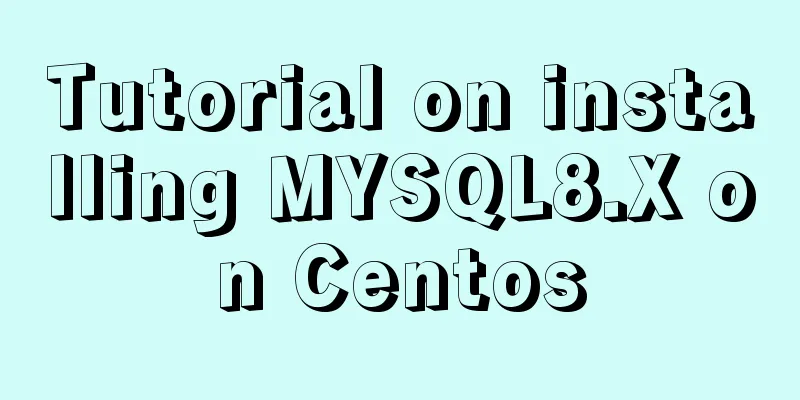WeChat applet development form validation WxValidate usage

|
I personally feel that the development framework of WeChat applet is generally similar to VUE, but its form component does not have its own validation function. Therefore, there are generally two methods when developing form validation for applet. One is to write the validation rules yourself, but it requires a solid foundation in regular expressions. The other is to use the WxValidate plug-in developed by the official community for form validation.
First of all, the download address and official documentation of the plug-in are in WxValidate download address and document address The specific location of the WxValidate.js file is wx-extend/src/assets/plugins/ wx-validate /WxValidate.js The first method to introduce is to copy the plug-in file to the file directory you need
After that, you can use local reference to introduce the plug-in into the JS file of the page you need. The specific operations are as follows
//In the index.js page, import WxValidate from '../../utils/WxValidate.js'
const app = getApp()
Page({
data: {
form: {
name: '',
phone: ''
}
}
})
Then pay attention to the data binding of the form component in the wxml file, otherwise the rules cannot be verified no matter how the form component is filled in. The binding method of the form component is as follows
//wxml page <form bindsubmit="formSubmit">
<view class="weui-cells__title">Please fill in your personal information</view>
<view class="weui-cells weui-cells_after-title">
<view class="weui-cell weui-cell_input">
<view class="weui-cell__hd">
<view class="weui-label">Name</view>
</view>
<view class="weui-cell__bd">
<input class="weui-input" name='name' value='{{form.name}}' placeholder="Please enter your name" />
</view>
</view>
<view class="weui-cell weui-cell_input weui-cell_vcode">
<view class="weui-cell__hd">
<view class="weui-label">Mobile phone number</view>
</view>
<view class="weui-cell__bd">
<input class="weui-input" name='phone' type='number' value='{{form.phone}}' placeholder="Please enter your phone number" />
</view>
</view>
</view>
</form>
Then add the form binding to the js file
//index.js
Page({
data: {
form: {
name: '',
phone: ''
}
}
})Then comes the most important verification rule writing First, you need to add the validation rule function to the onLoad function
// There are multiple functions in onLoad. Write the function name in the onLoad function and define the function outside onLoad onLoad() {
this.getuser()
this.initValidate()//Validation rule function}
//OnLoad has only one function in it onLoad:function(){
rules:{}
messages:{}
}
Then there is the code for validation rules and error rules
// Report an error showModal(error) {
wx.showModal({
content: error.msg,
showCancel: false,
})
},
//Verification function initValidate() {
const rules = {
name: {
required: true,
minlength:2
},
phone:{
required:true,
tel:true
}
}
const messages = {
name: {
required: 'Please fill in your name',
minlength:'Please enter a correct name'
},
phone:{
required:'Please fill in your mobile number',
Tel:'Please fill in the correct mobile phone number'
}
}
this.WxValidate = new WxValidate(rules, messages)
},
//Call verification function formSubmit: function(e) {
console.log('Submit event occurred in the form, the data carried is:', e.detail.value)
const params = e.detail.value
//Check form if (!this.WxValidate.checkForm(params)) {
const error = this.WxValidate.errorList[0]
this.showModal(error)
return false
}
this.showModal({
msg: 'Submission successful'
})
}
Let's take a look at the demonstration effect
This is the end of this article about the use of WxValidate for form validation in WeChat mini-program development. For more relevant mini-program form validation content, please search for previous articles on 123WORDPRESS.COM or continue to browse the following related articles. I hope everyone will support 123WORDPRESS.COM in the future! You may also be interested in:
|
<<: The phenomenon of margin-top collapse and the specific solution
>>: How to publish static resources in nginx
Recommend
In-depth understanding of the life cycle comparison between Vue2 and Vue3
Table of contents Cycle comparison usage Summariz...
Detailed explanation of component communication in react
Table of contents Parent component communicates w...
Implementation code for automatically adapting the width of the web page to the width of the mobile phone screen (viewport)
The general way of writing is as follows: XML/HTM...
Solution to the conflict between two tabs navigation in HTML
Let's start with a description of the problem...
Vue implements dynamic routing details
Table of contents 1. Front-end control 1. In the ...
WeChat applet implements simple calculator function
WeChat applet: Simple calculator, for your refere...
MySQL 5.7.18 MSI Installation Graphics Tutorial
This article shares the MySQL 5.7.18 MSI installa...
Example code for realizing charging effect of B station with css+svg
difficulty Two mask creation of svg graphics Firs...
A brief talk about JavaScript Sandbox
Preface: Speaking of sandboxes, our minds may ref...
Data storage implementation method in WeChat applet
Table of contents Global variable globalData Page...
Analysis of multi-threaded programming examples under Linux
1 Introduction Thread technology was proposed as ...
HTML form tag usage learning tutorial
Forms in HTML can be used to collect various type...
Detailed steps for deploying Tomcat server based on IDEA
Table of contents Introduction Step 1 Step 2: Cre...
MySQL tutorial DML data manipulation language example detailed explanation
Table of contents 1. Data Manipulation Language (...
Solve the problem of Syn Flooding in MySQL database
Syn attack is the most common and most easily exp...











